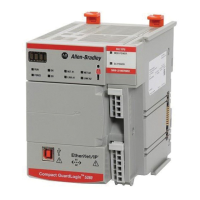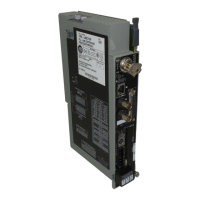190 Rockwell Automation Publication 1756-UM001M-EN-P - February 2012
Chapter 12 Redundant Systems
Redundancy and Scan Time
At the end of every program, the primary controller synchronizes and crossloads
fresh data to the secondary controller. This keeps the secondary controller up-to-
date and ready to take over. It also increases the scan time when compared to a
nonredundant system.
The amount of time a crossload consumes depends on how much data the
primary controller has to crossload:
• The primary controller synchronizes and crossloads any tag to which an
instruction wrote a value, even the same value, since the last crossload.
• Crossloading also requires a small amount of overhead time (1 ms per
crossload) to tell the secondary controller which program the primary
controller is executing.
Redundancy firmware revision 16.53, or later, provides the ability to limit which
programs are followed by synchronization and data crossloading. In many
applications, changing this can reduce the overall impact to the task scan time by
reducing the number of times a data area is synchronized. Removing a
synchronization point results in 1ms of overhead time saved, in addition to any
time that was used to crossload the data.
For complete details about the scan time of a redundant system, see the
ControlLogix Enhanced Redundancy System User Manual, publication
1756-UM535
.

